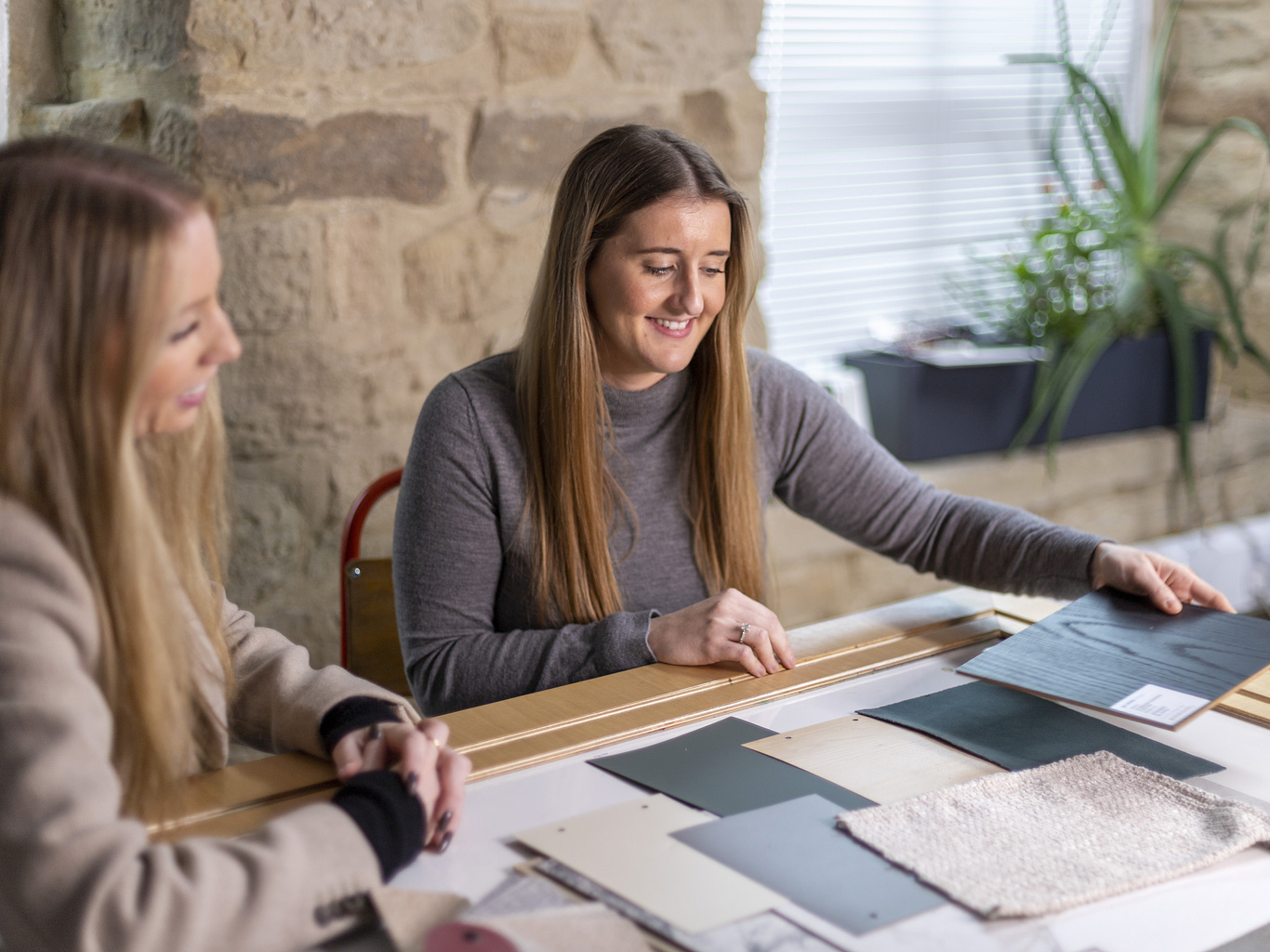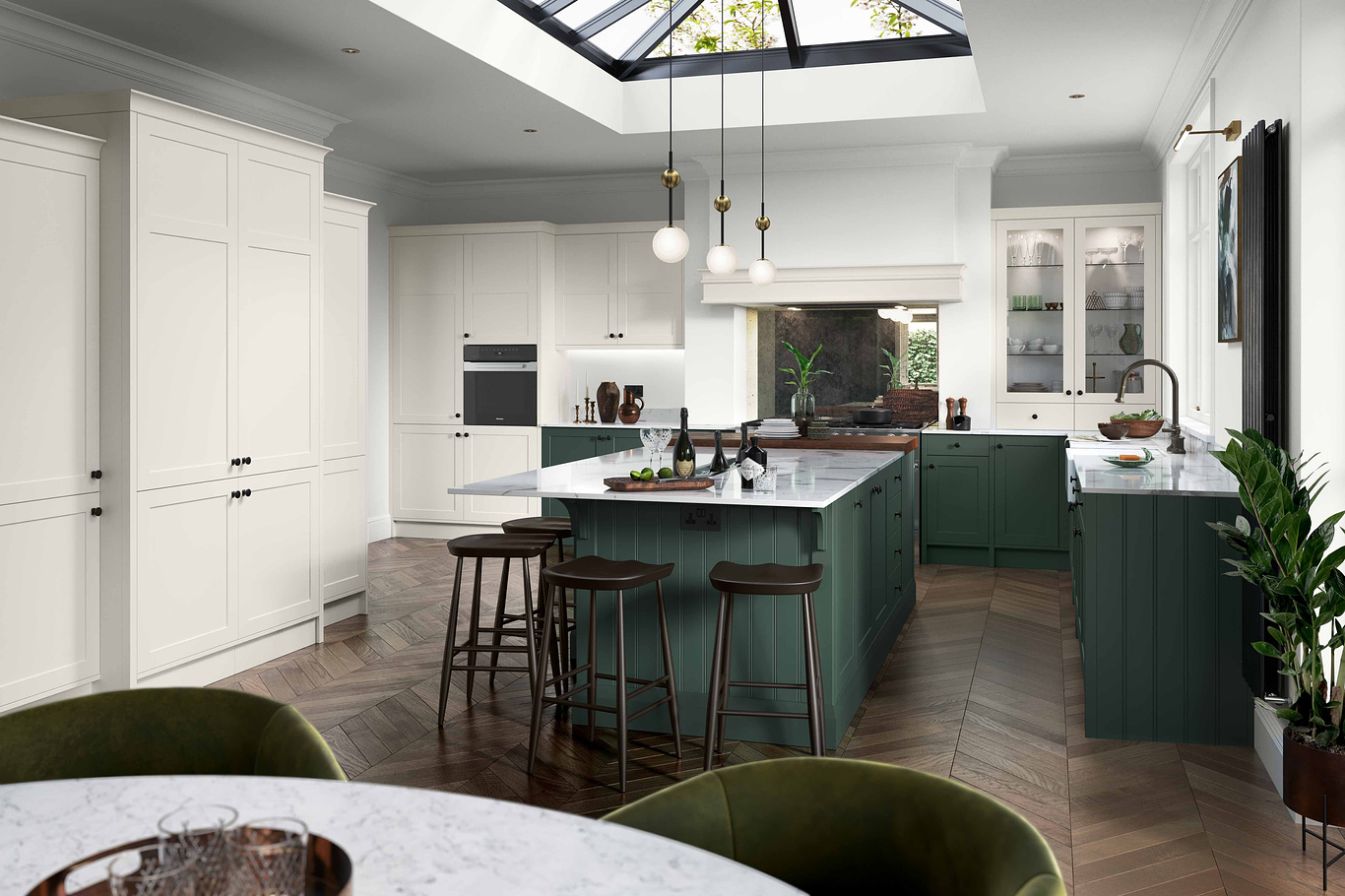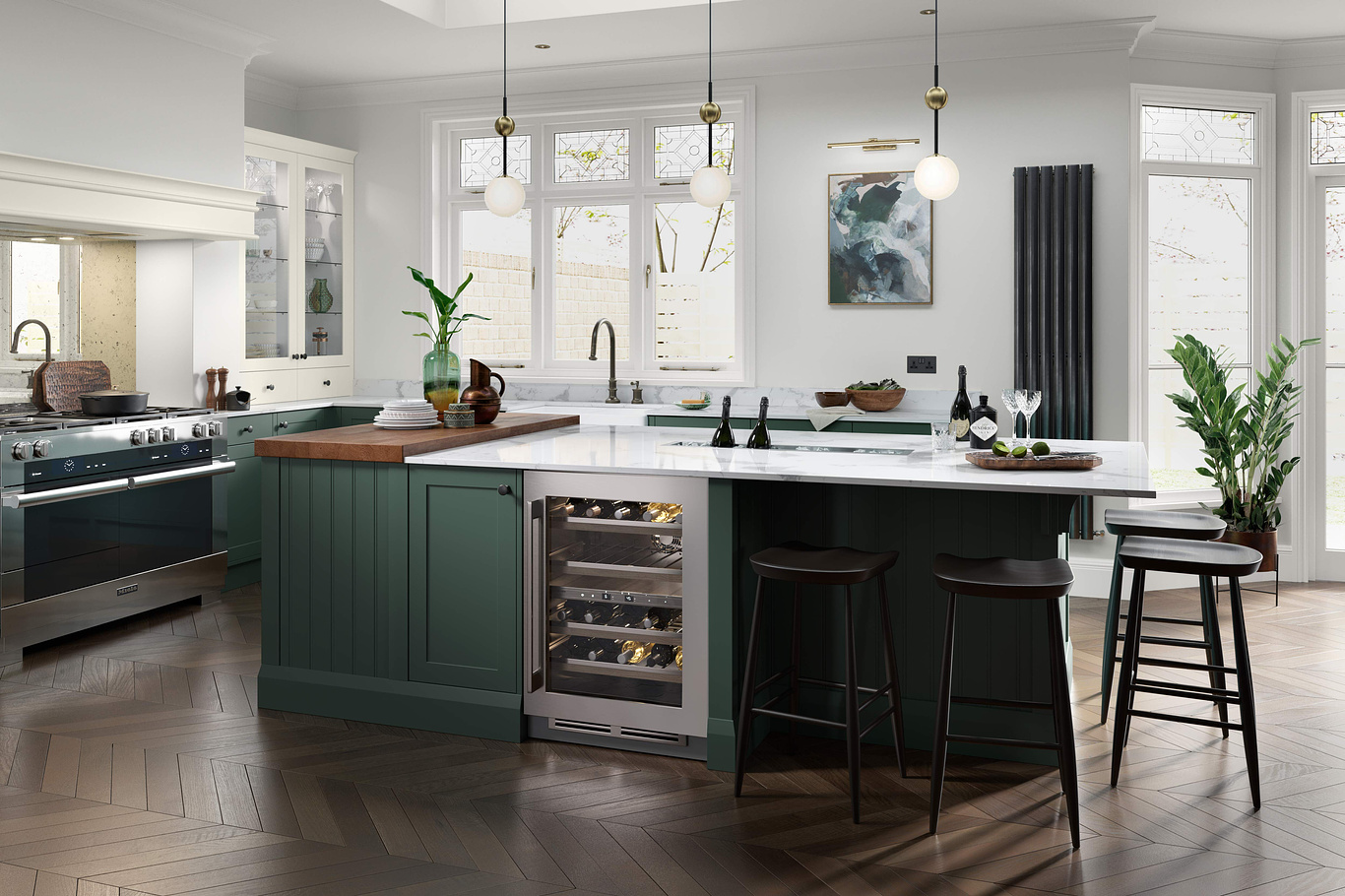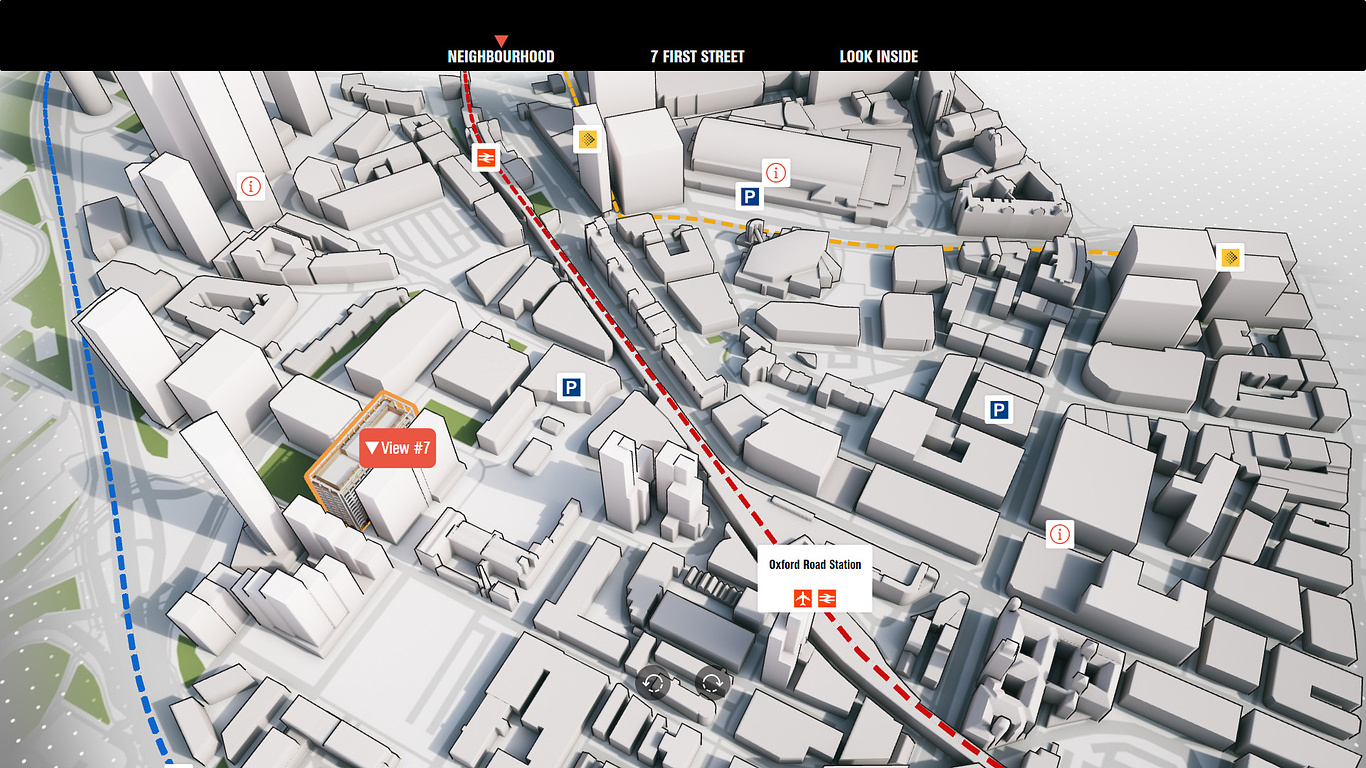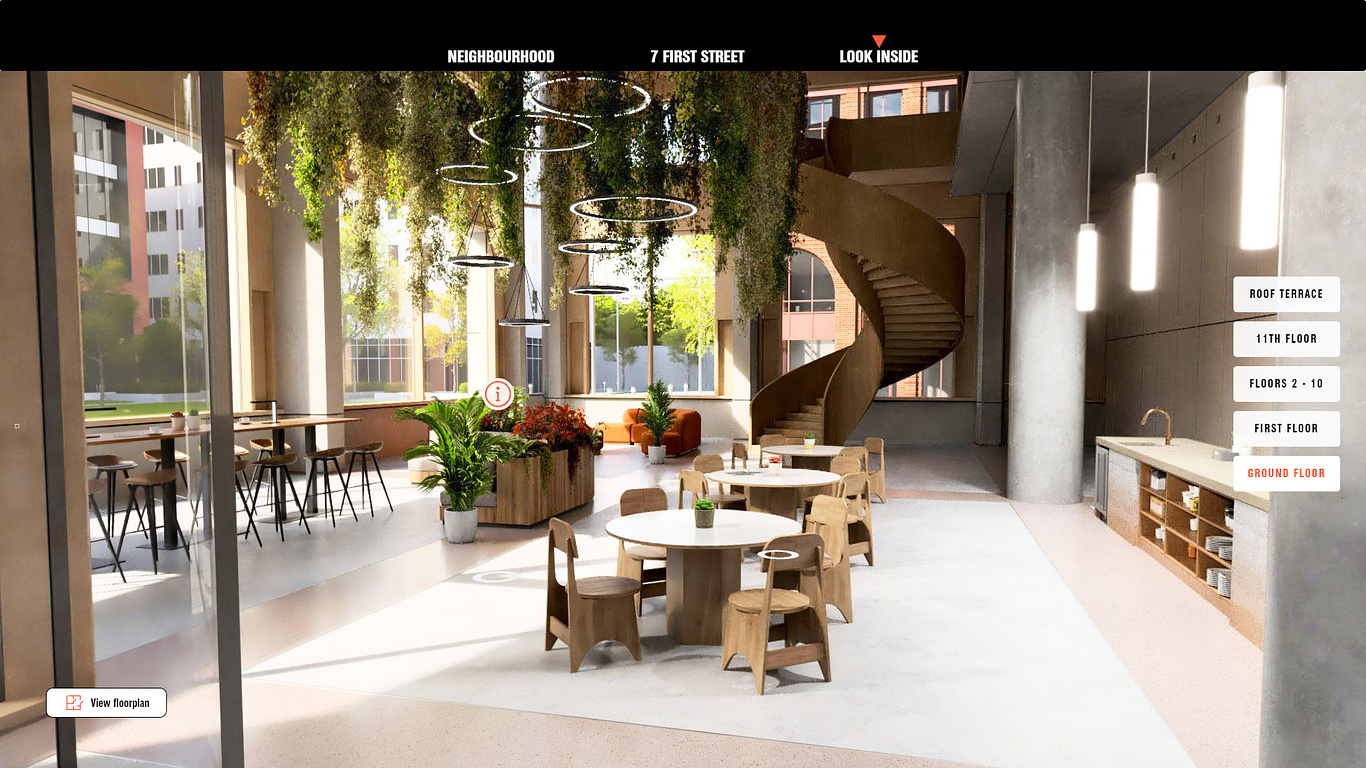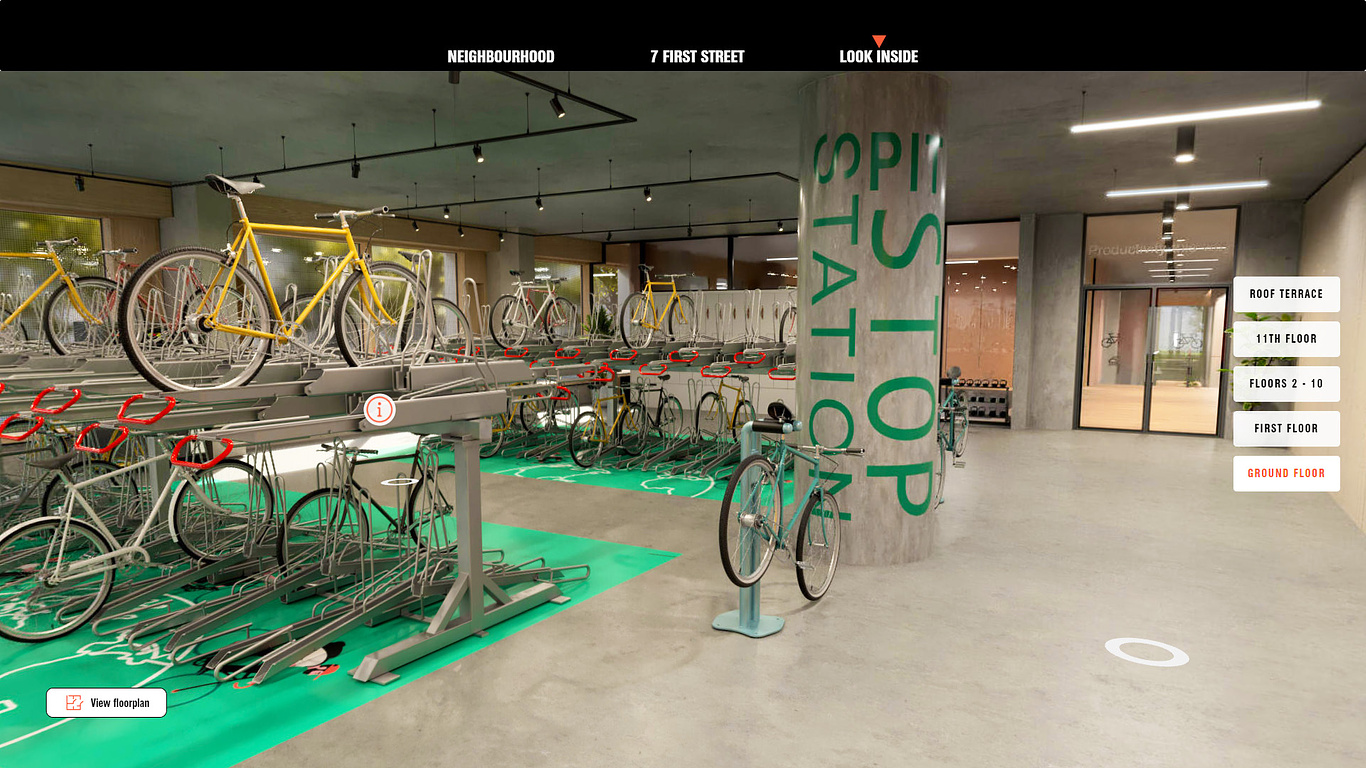
10 Questions With...
10 Questions with Pikcells
Welcome to another installment of "10 Questions With," a feature series on CGarchitect.com where we delve into the minds and practices of the world's leading visualization studios. This week, we sit down with the founders of Pikcells, a studio renowned for its innovative approach to architectural visualization and digital interiors.
Founded in the early 2000s by two ambitious design graduates, Pikcells has evolved from a fledgling startup into a respected name in the archviz community. Known for their adeptness at navigating the rapidly shifting digital landscape, the studio has continuously adapted its business model and creative processes to stay ahead of industry trends and technological advancements.
In our conversation, we explore the origins of their unique studio name, the evolutionary path of their business through economic shifts, and their distinctive approach to blending reality with digital craftsmanship. Join us as we uncover the layers of creativity, challenge, and technical mastery that define Pikcells.
1. What inspired the name "Pikcells" for your studio?
Richard Benson: Knowing how fast paced the digital industries are and also not having a firm business plan, we wanted something that encompassed a broad spectrum so we could be agile and pivot without a total rebrand, Pixels was taken so we went with the phonetic version. Ironically as we started doing more design work a couple of years back, we felt Pikcells was too limiting and tried to rename ourselves. It didn't go well so we stuck with it.
2. How did the studio get its start, and what was the vision behind its inception?
2. How did the studio get its start, and what was the vision behind its inception?
Richard Benson: Both Steve and I were really into the 3D Design parts of our respective Interior Design and Product Design degrees and knew we wanted to do something with CGI when we graduated.
Neither of us managed to find a job by the end of our final year in 2003 and during his end of year show, Steve was being approached by interior design agencies to create renders of their spaces, so he suggested we go into business. We were awarded a £5000 grant from the University of Huddersfield business incubator and off we went.
The initial plan to provide 3D Visualisation services to the Interior Design community turned out to be unviable so we pivoted and spent the next few months researching where best to apply our skills. Eventually we stumbled across Architectural Visualisation and fell in love with it. That became the modus operandi for the next 4 years until the 2008 recession where our arch viz work all but dried up and we were a few grand away from going bankrupt. This turned out to be the best thing that ever happened to us and we pivoted again into the Home Interiors Market while still doing bits of Arch Viz [Which we eventually dropped a few years later].
3. How do you approach blending reality and imagination in your visualizations?
Matt Fell: The realism of our Interior CGIs comes down to constantly comparing our work with photography and identifying where we need to keep improving. We have always found it’s the subtle imperfections that we add throughout our renders that make them seem instantly photoreal to the end user. We also accept that some elements of 3D are easier to create with photography, when the end user identifies with the photography it also assists the end goal of realism.
We have a maxim we use to deconstruct an image if something doesn't look right; S.O.L.I.D.D S - Styling, O - Organisation, L - Lighting, I- Imperfections, D - Detail, D - Design.
If we’re struggling with an image and something just isn’t quite right it will be one of these points that isn’t working and is throwing the image off. Sometimes it's easy to just keep bashing away at an image and hoping it will fix itself with a final render but we always come back to the above that allows us to easily identify the problem.
If we’re struggling with an image and something just isn’t quite right it will be one of these points that isn’t working and is throwing the image off. Sometimes it's easy to just keep bashing away at an image and hoping it will fix itself with a final render but we always come back to the above that allows us to easily identify the problem.
4. What are the key challenges in architectural visualization today?
Matt Fell: Staying at the top is the obvious one. We always want to be the best at what we do, whether it's our CG Images or our kitchen, bedroom, bathroom visualizers and configurators, we’ve worked really hard to be considered as a global leader in our field. Every piece of work that leaves the studio either adds to or subtracts from that reputation and it requires lots of organization and discipline to maintain a high level of consistency every year.
Other things that we worry about;
- Will AI take my job?!
- Keeping up with new technology.
- Being undercut by overseas suppliers.
- Staying relevant in an ever changing and growing market.
- Making enough money.
- Trying not to turn into a boring old company as we get on a bit.
- Keeping the team inspired & motivated.
5. Can you walk us through your creative process for a typical project?
Matt Fell: We occasionally adapt our workflow to suit different clients’ needs, however the key stages stay the same;
Matt Fell: We occasionally adapt our workflow to suit different clients’ needs, however the key stages stay the same;
- Information gathering
- Design and Development
- Production
The following workflow has been put together from our experiences over the years and we’ve learnt that if one stage is missed or corners are cut it has a real impact on the overall progression of the image.
Information
For everything to run as smoothly as possible we require all the information at the start of a project. We look for any creative brief, project overview, demographic information so we can identify the reason for the images and how they want to be perceived.
For everything to run as smoothly as possible we require all the information at the start of a project. We look for any creative brief, project overview, demographic information so we can identify the reason for the images and how they want to be perceived.
References are key so we’ll ask our client for any ideas they may have for the look and feel of the images so we can stay within that look. We’ll also look into the client’s previous literature / Brochures so we can stay consistent and ensure our work sits seamlessly alongside existing imagery.
Samples are really important for us, with the level of realism we push for we need suitable samples to recreate the product well enough in our imagery. In the KBB arena this can range from kitchen doors, handles and appliances through to flooring and timings are discussed at the initial meet up as well as number of shots required.
Design and Development
Once the brief has been taken for the project, we start gathering relevant imagery and references to determine the design direction, bearing in mind any specifications suggested by the client. These mainly focus on the type of setting and design details, but can also provide a general overview of the intended look and feel.
Once the brief has been taken for the project, we start gathering relevant imagery and references to determine the design direction, bearing in mind any specifications suggested by the client. These mainly focus on the type of setting and design details, but can also provide a general overview of the intended look and feel.
For some clients we also develop a more in-depth look development document, aimed at creating a different visual identity and consistency throughout all imagery going forward. All images within these documents will have a similar look/feel and come from real spaces, this helps with realism and detailing for the final imagery.
When the design direction is approved we block in the layout and basic set design to a level of detail which is enough to get an idea of how the layout will appear when finished. We keep the modeling pretty loose at this stage so any amendments can be quickly made. We use clay renders so our clients are focused on the layout and composition of the shot rather than focusing on details too early in the process.
With our layout and design approved we start gathering references and then mock up our proposal via a styling board. This details all the various finishes, proposed camera viewpoints and props.
We’re always looking for efficiencies in our workflow and for this stage we use a mixture of 2D images, basic models and textures. They allow everyone to see where the image is heading at an early stage before too much time has been spent on detailing models and textures etc. Also means we can produce these drafts very quickly whilst satisfying the brief.
Production
With all previous stages being approved we then start adding final details to props, textures and lighting.
With all previous stages being approved we then start adding final details to props, textures and lighting.
Whilst the details are being added we take the clients product into isolation and render a technical draft. We use a neutral lighting setup so colours and details can be viewed as accurately as possible.
With technical approval and all detailing complete we arrive at our Final Draft stage. This will be the first time where the image will be taken through post production where each element of the image is tweaked and balanced to look more realistic and accurate.
Finally we put all the ingredients together and the result should be predictable and consistent.
6. How has technology changed the landscape of architectural visualization?
Richard Benson: I can still remember when someone showed me that you could remotely log on to your work machine from home and it is still one of the greatest days of my life😆. Up until then I would drive into the office late at night to check on important renders because I couldn't sleep from worrying.
Arch viz has been at the mercy of technology since traditional artists' impressions were disrupted by digital artists in the late 90s. Since then [Like most digital industries] there have been constant changes and improvements from the way assets are added to scenes to the speed and simplicity of render engines.
Software like Blender has leveled the playing field and provided a common ground enabling new artists to confidently set up a business and grow without the typical software overheads.
It also has to be said that the vast amount of learning resources and asset libraries available now have a big influence on the rate of adoption of CGI in arch viz and have evolved to become an integrated part of technologies such as Unreal engine.
The disruption of Arch Viz seems set to continue with the dawn of AI which will undoubtedly have a massive impact on the industry as the tools become more refined and specific.
It can be exhausting trying to keep up with it all but it is important to keep an eye on any new developments and adapt accordingly because, as the artists doing the impressions found out, things can change in an instant.
7. Could you share insights on a particularly challenging or unique project?
7. Could you share insights on a particularly challenging or unique project?
Matt Fell: A project that stands out as being particularly challenging within our portfolio is our collaboration with HDMI and Ask Real Estate on the groundbreaking First Street 3D Virtual Tour. This project presented several challenges that required creative problem-solving from our developers, and also pushed the boundaries of the technology we typically use in our interactive projects.
The main task was to develop a solution that went way beyond a traditional 360 tour. It needed to showcase the development and its features, as well as providing an overview of the surrounding neighborhood amenities. We recognised that the commonly used virtual tour software such as Unreal Engine, often come with some limitations, not to mention the hefty pixel streaming costs. By leveraging our expertise in WebGL technology, our developers engineered a bespoke solution similar to Matterport, but tailored to serve as a precision sales tool for marketing the property development. This lessened the financial burden on the project and allowed us to have greater control over the overall user experience.
One of the standout features of our tour is its compatibility across all devices and browsers. Unlike conventional high-tech alternatives, our solution eliminates the need for high-powered computers or specialised software, making it accessible to a wider audience. Prospective customers can seamlessly access the immersive 360° experience from anywhere, regardless of their technological capabilities or the device they're using, simply by clicking on a web-link shared by our client.
To get the best user experience we optimised every aspect of the tour to ensure smooth navigation and high-quality visuals. Photorealism is what we strive for, so combining 360° drone photography with our 3D renders increased the immersive experience.
8. What are the future trends you foresee in this industry?
8. What are the future trends you foresee in this industry?
Richard Benson: It is difficult to predict where things are going with the rate that technology is progressing at the moment but at the risk of looking like a total Nostradamus I'll have a go.
Generally, the things which will affect Arch Viz the most will come from the clients and the tools available to them. AI looks set to reshape the industry and Architects are already using AI to design buildings with superb quality visuals that match the best studios [Because they are trained on their data!]. The outcomes though are homogenized and generalized and it's hard to apply specific materials and finishes and get the exact thing you want in the way you want it.
I read a great quote somewhere that “AI does what you want but not what you mean” and this definitely seems to be the case at the minute.
One solution is to train the generative AI models on architectural products and terminology so they deliver a more specific result. Once this happens, I think a lot of image production could be done via AI tools bolted onto 3D software like we are already seeing. This would cause the bottom end of the image market to drop out leaving only the studios and artists that can offer something more and increase the expectation above and beyond what is achievable with AI. This would probably involve better animations and more interactive experiences such as WebGL and Unreal Engine tours so that people reviewing designs can either strap on a VR headset or fully explore each building and space like it's a computer game. We see a bit of this already but it will need to become widespread and accessible with better tools to allow anyone to comment and feedback directly via government planning portals for a more holistic design review process.
9. How do you ensure client satisfaction and manage expectations in such a detail-oriented field?
Matt Fell: Over the years we’ve built up a high level of trust with all of our clients, this comes from building relationships and an excellent level of communication so the client understands what we do, how we do it and when they can expect it.
Our workflow ensures the client is always in the loop at critical stages and knows what to expect as a final deliverable.
We always prefer chatting on the phone or setting up a remote meeting rather than emails which helps us with understanding the clients needs sooner and allows our clients to be more involved in the process.
10. Lastly, where do you see "Pikcells" in the next 5 years, and what are your goals for the studio's future?
Matt Fell: Over the years we’ve built up a high level of trust with all of our clients, this comes from building relationships and an excellent level of communication so the client understands what we do, how we do it and when they can expect it.
Our workflow ensures the client is always in the loop at critical stages and knows what to expect as a final deliverable.
We always prefer chatting on the phone or setting up a remote meeting rather than emails which helps us with understanding the clients needs sooner and allows our clients to be more involved in the process.
10. Lastly, where do you see "Pikcells" in the next 5 years, and what are your goals for the studio's future?
Richard Benson: 2023 was a really busy year for us as we have been branching off our interactive business into its own company called “Onfigr”. Onfigr takes the best of our inspirational kitchen, bedroom, bathroom visualisers and configurators and integrates them within a platform which allows our clients to monitor performance and gather data on how successful their products are with their customers.
We have also started dabbling with AI tools and are training an AI model on our CGI dataset so that we can create more predictable output images.
The first product we have developed using this tech is our “Palette Picker” tool. This application allows customers to design and style a kitchen, bedroom or bathroom without the need for lots of pre-rendered CG Images. A multimodal AI then recognizes the design features in an uploaded image and uses this information to create a moodboard along with some AI generated images.
Pikcells will continue to smash out the very best CGI Room Sets and Interior Design with a focus on high volume rendering and automation to make sure we are offering the best possible service to our clients. We have developed some really great technology which allows us to create 1000s of CG renders in a fraction of the time of doing it manually and are excited to see where this goes.
In everything we do the goal is always to be the best we can be, make cool shit and try to enjoy the journey.

Pikcells
We are Pikcells, an award winning CG content and interactive software studio, founded in Huddersfield in 2003
You must be logged in to post a comment. Login here.
About this article
Welcome to another installment of "10 Questions With," a feature series on CGarchitect.com where we delve into the minds and practices of the world's leading visualization studios. This week, we sit down with the founders of Pikcells, a studio renowned for its innovative approach to architectural visualization and digital interiors.
visibility380
favorite_border0
mode_comment0



